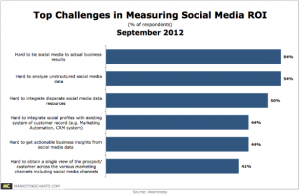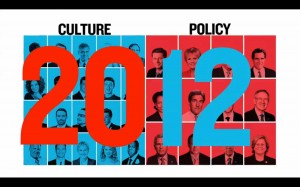Today, customers are more than just customers.
 Social media has become a formidable force transforming power from companies to customers and offering platforms for customer networks to cultivate, organize and build influence.
Social media has become a formidable force transforming power from companies to customers and offering platforms for customer networks to cultivate, organize and build influence.
There are over 1.01 billion people using Facebook each month, hundreds of millions on social networking sites such as Twitter and LinkedIn and a fast rising base of content communities, media sharing sites, and blogs.
These quick growing social platforms provide opportunities for companies to engage and influence their customers and new frontiers for customer intelligence.
Customer Engagement & Social Media
In the Decision Management article ‘Customer engagement, buyer-seller relationships, and social media’, Sashi examines the opportunities for businesses to deepen customer relationships and develop customer engagement strategies through social media platforms. Through modeling a customer engagement cycle, Sashi looks at the role of the internet, social media and the customer.
Customer Engagement Cycle
- Connection: in addition to traditional offline means, social media platform offers alternative avenues for customers to connect with the company and each other
- Interaction: once connected, real time interactions enable more frequent, speedy and deep interactions among much larger social networks and online communities. Online social interactions provide valuable customer intelligence and feedback enabling more strategic decision-making and customer service
- Satisfaction: customer satisfaction through interactions is necessary for the continuation of interaction and advancement towards engagement
- Retention: customer retention results from consistent delivery of positive touch points or overall satisfaction over time leading to an enduring relationship between the customer and company
- Commitment: two key forms of customer commitment are examined. Calculative commitment, which is more logical, resulting from high switching costs or lack of competition, and affective commitment, which is more emotive and a result of brand trust, bonds and relationships with the company. Commitment leads to customer loyalty.
- Advocacy: consistently delivering positive customer experiences may turn customers into brand advocates who will spread the word about their experiences with their social networks and interact with other customers and non-customers
- Engagement: customer engagement transpires when customers have strong emotional bonds with a product, brand, or company and encompasses both consistent customer delight and customer loyalty. The company turns the customers into fans and further develops the relationship creating new connections and interactions and continuous movement through the stages in the customer engagement cycle.
Social media networking sites offer valuable two-way communications to enhance market research, customer service and the ability to strengthen connections between the customer and company’s brand. It is important for companies to leverage the potential of social media to build relationships, relational exchanges, and ensure customer engagement.
According to Sashi’s article, reaching the engagement stage and building company ‘fans’ is only possible through progression of the customer engagement cycle. The ability of companies to effectively leverage multi-channel marketing and integrate social media into existing customer service functions is essential to delivering outstanding service across customer touch points and building a customer centric business.
The customer engagement cycle explores key stages in advancement to a strong customer bond and relationship to a brand and company; however, in practice does not depict situations whereby a customer may follow a different sequence of cycles. For example, satisfied customer may disengage with the company and reconnect and interact after a period of time moving from cycle one to three back to one. McKinsey’s Consumer Decision Journey may offer a clearer representation of how consumers engage with brands.

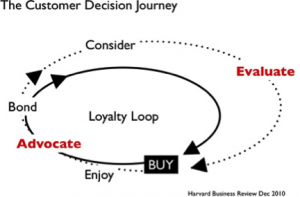
Brand Trust in the Digital Era: A Closer Look
Building Brand Trust
The social landscape is evolving and it is increasingly important to develop integrated online and offline customer engagement strategies. Although traditional media sources remain the most trusted source of information about a company, according to the 2012 global study by Edelman on brand trust, social media saw the largest percentage increase (75 percent) as a source of brand trust. Social media networks are transforming the ways customers interact with companies and brands.
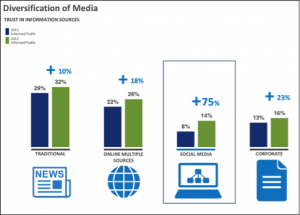
Increased Social Interaction
Social media enhances customer services and offers additional platforms for customers to interact with a company’s business and brand. A recent study showed 62% of customers having used social media as an outlet to share customer service issues and that 81% believe it is important for a company to respond to inquiries and complaints through social channels. It is becoming increasing important for companies to integrate social media into their customer service models.
Customer Intelligence
Social media is transforming the way we do business and our customer relationships. Social media increases customer touch points increase and delivers customer intelligence through social network conversations and customer information generated. A particular area of interest for me is how to leverage the customer information and data online to make more strategic business decisions. Social media brings new opportunities, enabling greater understanding of customer service needs, market perceptions and influencing decision-making.
Customer Service & Engagement
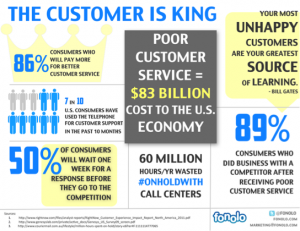 Social media strategies for customer service and engagement will deliver tangible results for a company. In order to maintain a competitive advantage, firms must utilize both online and offline strategies to build a customer centric company committed to listening to their customers, effective engagement strategies, and adaptability in the digital era, which is rapidly changing the ways customers engage with brands.
Social media strategies for customer service and engagement will deliver tangible results for a company. In order to maintain a competitive advantage, firms must utilize both online and offline strategies to build a customer centric company committed to listening to their customers, effective engagement strategies, and adaptability in the digital era, which is rapidly changing the ways customers engage with brands.
Social networking platforms offer avenues to listen and use the conversations and feedback to improve the customer experience. Social media makes it easier to interact with customers to continuously improve the service model. Beyond a stronger brand identity and awareness, social media can be leveraged in an integrated approach to the customer brand experience and long-term company strategy.
Social media… can you afford not to?



